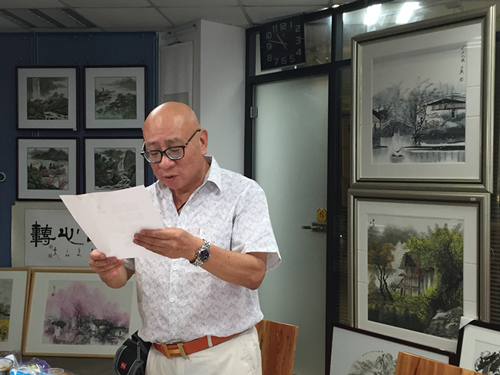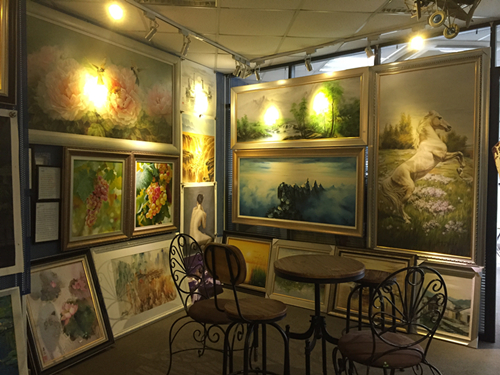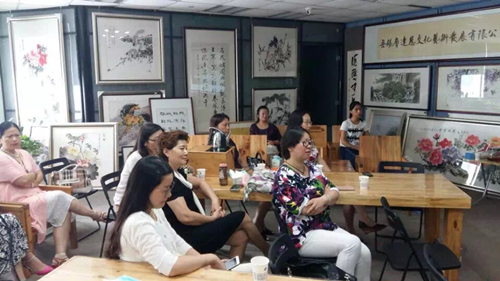 |
|
Kawakami reads his original poem. [Photo provided to chinadaily.com.cn] |
Meeting Kawakami Sadao for the first time, I was really shocked at his fluent Mandarin. It came as no surprise when I learned that he has lived in China since 1988, when China first opened its doors to the outside world.
Originally from Japan, Kawakami Sadao, or Zhang Yi in Chinese, now runs the Modern Culture Art Gallery in Wuxi New District .
Kawakami knew about China from his childhood, thanks to his mother, who was engaged in Sino-Japan communication in a Japanese government office and always took business trips to China. She was even invited to China's National Day receptions.
What's more, his mother sent him to learn Chinese in Chongqing Normal College (now Chongqing Normal University) after he graduated from high school in 1964.
In 1988, he was accredited at Dalian, Liaoning province by a Japanese company, and then moved to Wuxi in 1997.
His first impression of Wuxi was of shanty towns, the smelly Grand Canal and overgrown weeds. However, he witnessed the rapid growth of the city.
Due to Kawakami's quiet character, Wuxi's similar latitude to his hometown Hiroshima and its comfortable climate, Kawakami decided to settle down and work in the city, after comparing it with Dalian and Shenzhen, China's first special economic zone in Guangdong province.
To live in China permanently, he resigned and set up a trading company with his friend in 2001 in Binhu district, Wuxi, which was also the first foreign company in the district.
 |
|
A corner of the Modern Culture Art Gallery [Photo provided to chinadaily.com.cn] |
Influenced by his mother, Kawakami is also enthusiastic about cultural exchange.
He has assembled an acrobatics troupe and a song and dance troupe in Chongqing, and organized painting and calligraphy exhibitions for Chinese artists in Japan in the 1980s.
In 2013, he organized a Wuxi folk culture exchange at his own expense, with over 180 people from surrounding universities attending.
Now, Kawakami arranges public beneficiary activities twice a month in his gallery, such as singing, yoga and poetry appreciation events. Usually he gives notices in advance via WeChat.
Such small gatherings are always attended by dozens of like-minded people.
Of course, he has made lots of friends through art, Kawakami said, adding that he would like to be a bridge for cultural exchanges between China and Japan.
 |
|
Kawakami arranges public beneficiary activities twice a month in his gallery. [Photo provided to chinadaily.com.cn] |
As for his family, Kawakami said that when he worked in Dalian, he transferred his son from a Japanese university to Dalian University of Technology.
Now his son and daughter-in-law run a company each in Wuxi – one is an environmental protection company and the other is a building materials company.